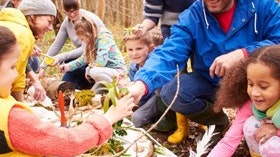Homepage
•
Learning Library
•
Blog
•
What unschooling can teach us about student-directed learning
Expand breadcrumbs
Expand breadcrumbs
- Learning Library
- Blog
- What unschooling can teach us about student-directed learning
- Homepage
- •
- Learning Library
- •
- Blog
- •
- What unschooling can teach us about student-directed learning
What unschooling can teach us about student-directed learning
By Team ISTE
September 29, 2015








